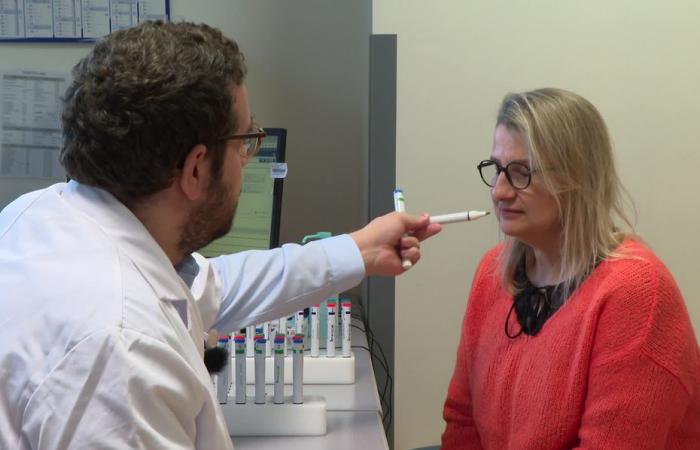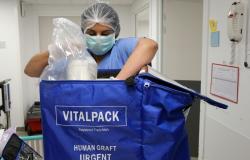
The Covid pandemic has increased the number of patients who have lost their sense of taste and/or smell in a lasting manner. At Poitiers University Hospital, consultations are offered to try to rediscover these sensations, the deprivation of which is very debilitating on a daily basis.
Company
From daily life to major issues, discover the subjects that make up local society, such as justice, education, health and family.
France Télévisions uses your email address to send you the “Society” newsletter. You can unsubscribe at any time via the link at the bottom of this newsletter. Our privacy policy
We remember that loss of taste, smell or both were among the many symptoms of Covid-19. Since the pandemic, the number of these pathologies has exploded and patients must undergo real rehabilitation to regain their abilities.
This translates into not knowing if it smells good in my house, if I smell good, if it’s burnt when I cook.
SarahCovid patient who lost her taste
Sarah had Covid in December 2022 and after several months, she realized that she no longer smelled. His general practitioner prescribed radio and MRI before sending him to Poitiers University Hospital. This is what Sarah told us: “This handicap, we only talk about it since Covid and on a daily basis, it translates into not knowing if it smells good in my house, if I smell good and not knowing if it is burnt when I cook. And also, I I like going to the seaside, I no longer feel anything, there are lots of everyday things that I miss a lot Taste, I haven’t lost it and I hardly dare imagine those who have lost it and. the taste and smell, the pleasure of eating is no longer there.”
An olfactory rehabilitation consultation at Poitiers University Hospital
•
© Mathieu Maillet – France Télévisions
That day, Sarah had her first consultation. Tests are carried out to determine the most suitable treatment, as explained by Doctor Florent Carsuzaa, ENT hospital practitioner at Poitiers University Hospital: “This test is used to measure the sense of smell and to see if the patient has a problem with the transport of odors, or with the mental representation of odors. With this test, we can better target olfactory rehabilitation.”
The advantage of coming to a session is that the patient will be guided to do exercises that he could not do alone at home.
Louise DuretSpeech therapist at Poitiers University Hospital
These tests make it possible to better target olfactory rehabilitation.
•
© Mathieu Maillet – France Télévisions
This therapy is quite heavy since patients must come for a consultation once a week for at least twelve weeks and also do exercises at home. Louise Duret is a speech therapist at Poitiers University Hospital: “Our role will be to help patients reactivate memories and work on what they can use neurologically. The patient needs to practice sniffing out odors at home to work on detection and the mental imagery work is done here in the session. The advantage of coming to a session is that the patient will be guided to do exercises that he could not do alone at home.”
ALSO READ : Cryotherapy: when the cold allows you to regain taste and smell
Some patients like Sarah lost their taste, others their sense of smell, or both. Doctor Florent Carsuzaa specifies the difference between the two meanings: “We must distinguish between taste and smell. Taste is only the distinction between sweet and salty, sour and bitter thanks to the taste buds that we have on the tongue. Everything else is smell. Being able to distinguish meat from fish is a matter of smell, a banana from chocolate is also a matter of smell.”
It is estimated that loss of smell and taste is one of the symptoms experienced by 30 to 60% of people affected by Covid-19.





